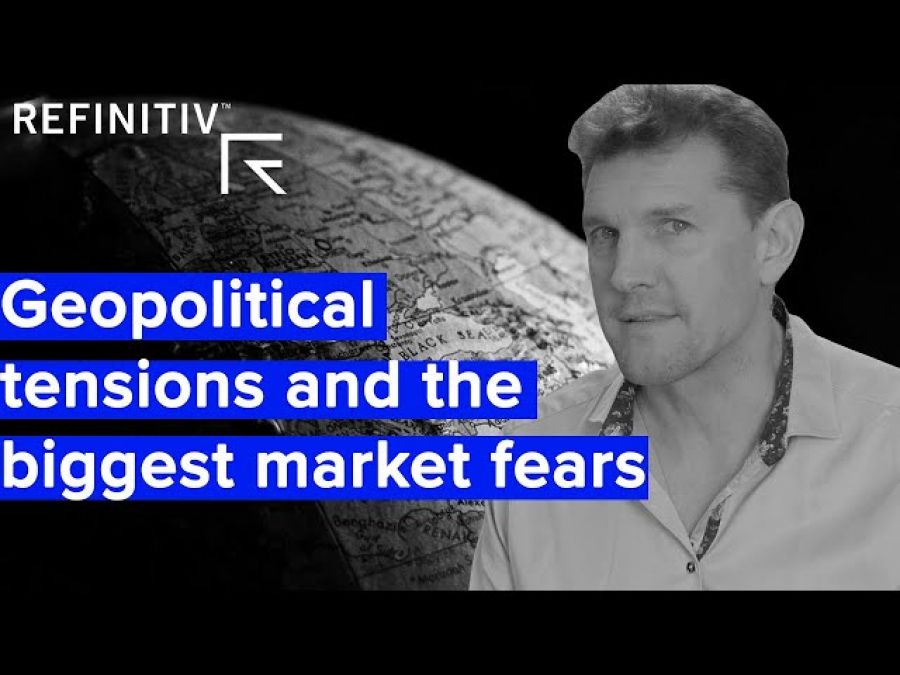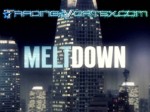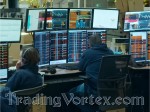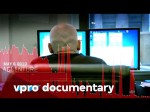Video Transcription:
Who to Fear: Iran or the Fed? | The Big Conversation | Refinitiv
ROGER HIRST: The first trading day of 2020 saw the S&P make another new all time high before news of the U.S. attack on an Iranian general reversed the gains on the following day. Now, although geopolitics are dominating the headlines, it could be a change in momentum of the US Federal Reserve's repo operations that poses the greater short term threat to equity markets. And that's the big conversation. Last year, 2019 started off on the back foot after global turmoil in the fourth quarter of 2018 had led to a 20 percent decline in the S&P 500 and close to close basis. This, however, set up global markets for one of the best years of the last decade, with the S&P 500 gaining nearly 30 percent through 2019 and surging 13 percent off the September 2019 lows with that momentum spilling over into the first trading day of this year. Obviously geopolitical events have given markets an early jolt in 2020 and are a reminder that politics rather than economics may currently be the biggest catalyst for financial markets. Let's not forget last year, markets soared despite a dismal performance from global manufacturing, which even today is implying recessionary levels in many parts of the world. The US December ISM Manufacturing Index fell even deeper into contraction territory last week or is still above outright recession territory, which is usually considered to be a prince anywhere below 45. So can the latest geopolitical shockwaves become the catalyst for a reversal? Clearly, there's a lot of uncertainty and events could already have changed between filming this on Monday, the 6th of January and its release on Wednesday, the 8th of January. But the US equity market may be facing greater uncertainty from something far more mundane and arcane, which is the withdrawal of emergency liquidity from the US funding markets. But before we touch on that, let's take a look at the initial reaction to events in the Middle East. On Friday, the 2nd of January, so far as the crude oil prices immediately spiked, as would have been expected, with both the US based West Texas and the global benchmark, which is Brent, rising around 4 percent on the initial news and then further on Monday. And it should be noted, however, that this initial reaction was far less than the spike in oil prices that we saw after the missile attack on Saudi oil facilities in September of last year. But what should be noted both then and now was the impact on the spread between Brent and West Texas. In September, the spread of Brent over West Texas jumped as soon as the futures markets reopened on fears of a supply disruption. But within a few hours, only this move had given up nearly all of those gains. And I think this reflected a new dynamic, which is that the US is now a net exporter of oil, so that supply issues in the Saudi sphere with those facilities being impacted, is seen as being far less serious than a disruption would have been a decade ago. And of course, in a world where central banks, particularly those of US, Europe and Japan, are looking for any excuse whatsoever to open the liquidity spigots even wider, this geopolitical uncertainty may be just the excuse to keep the fourth quarter accommodation going into 2020. But let's assume for now, the US Fed in particular is going to try and normalize its policy. Last year, we saw a pickup in liquidity provision that broadly fell into two parts. The first one was a sudden surge in overnight US Treasury repo costs. Very broadly, this is the costs of funding a bank's balance sheet in the short term markets. Now there were fears that the funding markets could grind to a halt again, as they had in 2008. So the New York Fed stepped in with both overnight funding and term funding, which is usually out to around about 14 days. And although this did stabilize the funding costs, the size of those provisions continued to grow and grow as a number of key players continued to hoard capital. And if this first phase was a reactive phase, the second phase was pre-emptive, driven by concern that funding costs over year end, turn funding, could also blow out as they had often done in the past. So the Fed therefore further increased the size of its funding operations and then added some new regular facilities to ensure ample liquidity from December the 15th to January the 14th, with a specific focus on the 30th, December to January 2nd window i.e. around that turn. Well, the year came and went. The year end, rather than a collapse like 2018, we had a surge in equity prices probably because of this Fed backstop, a bit like the run up we had in 1999 when authorities provided liquidity to protect against Y2K uncertainty. By the end of last year, the Fed's balance sheet had been expanding at a rapid pace, although it hasn't reached the previous highs. The move has been dramatic. Whether this is true QE or not is irrelevant. The messaging was as important as the mechanics because the Fed signalled that on a short term basis they would do whatever it takes to stabilize markets. And the S&P 500 in particular appears to have ebbed and flowed with these liquidity injections with a one week lag to changes in the Fed's balance sheet. But in some ways, the key point here is that these supposed to be short term operations. Although they are still being undertaken, some of that early liquidity should have dropped off on Monday, Tuesday and Friday of this week. Though there are another three 35 billion dollar facilities to come between now and mid-January. However, if there are any signs of equity market weakness on the removal of that liquidity, won't the Fed simply roll these facilities on an ongoing basis? And that's certainly the core expectation of market. Short term funding that is constantly rolled, well, effectively that becomes long term funding. And as mentioned previously, those geopolitical tensions themselves may be just the excuse that the Fed is looking for to keep their operations running. If that becomes the case, it's worth remembering what happened in Q1 2000 of the global authorities had injected a precautionary amount of liquidity ahead of the Y2K event, having already loosened policy in 1998 after the collapse of Long-Term Capital Management. The Nasdaq rallied another 25 percent before eventually it collapsed under the weight of its own ludicrous valuation, which was its own central bank induced Minsky moment, which led to a two and a half year decline in the US equity market. So central bankers can still be far more dangerous for markets than politicians, but undermining risk assets is not part of their intentional programming. There's been a lot of chatter, again, about the recent re steepening of the U.S. yield curve at the end of last year. As you're probably aware, the U.S. yield curve has followed a similar pattern ahead of the last few U.S. recessions. First, the curve inverts. That's when the 10 year yield falls below that of the two year yield or the two year yield rises above that of the 10 year. And this inversion usually occurs well in advance of a recessionary event. There was a brief inversion on this part of the curve in the middle of 2018. However, the countdown to a recessionary event usually comes from the re-steepening of the curve. But as with the inversion, the re-steepening can begin many months in advance of recessionary events. By the end of 2019, the curve had significantly re-steepened off the lows, in fact, taking it to a 12 month high. Now, not withstanding the decline in long dated yields and the back of last week's political events, the initial re steepening again sparked renewed calls for an imminent recession. And these calls were given additional impetus by last week's ISM manufacturing data, which as noted in the previous section, had fallen further into contraction territory. although the market PMI version has remained resolute above 50 throughout. And as we noted in our top charts for 2020 segment at the end of last year, we must also be on watch for a deterioration in consumer confidence. Although the labour differential has rebounded to zero, a fall below zero has been a precursor to the last three recessions. Consumer confidence itself continues to test the 10 year uptrend. Remember, when this indicator turns, it can turn extremely rapidly. This is a broad generalization, but previous inversions prior to recessions saw the initial flattening and inversion caused by two year yields rising. And this is as growth picked up. It forced the Fed to raise rates such as the front end yield converged on the long end yields. Now, through much of 2018, it was true that the flattening was indeed due to higher two year yields. But from November 2018 through to September 2019, it was the rapid decline in the long dated yield, such as the 10 year space that drove the flattening of the yield curve. Now, low growth may have been a key dynamic, but it was also the result of central bank activity and the actions of a few commercial banks who were rebalancing their loan and bond portfolios i.e. This was not the normal flattening dynamic that we'd seen prior to previous recessions. And this dynamic has also influenced the recent re-steepening. Prior to previous recessions, the restructuring had resulted from the Fed cutting rates in order to offset the slowdown that they had manufactured via the previous tightening cycle. And this is all part of a fairly normal and recurring business cycle that has existed for much of the post-war era. On this occasion, however, most of the steepening has come from a rise in the 10 year yield from those excessively depressed levels in September 2019. So the dynamic of flattening and re steepening of the US curve is therefore somewhat different than the dynamics that preceded previous recessions. Wage inflation has not yet picked up, which has allowed unemployment rates to remain incredibly depressed, close in fact to the 50 year lows. And the Fed has not been forced to act based on tight unemployment conditions, at least not yet. But there are risks that this liquidity that is sloshing around the global system currently with a very low velocity could quickly build momentum and force the hand of central banks. As we've mentioned in previous segments, geopolitics may drive asset prices despite the best efforts of central banks. But for now, the dynamics of the inversion and the risk deepening of the curve are giving a very different message from the dynamics that preceded the previous recessionary events. And for now, the central banks continue to provide historically abnormal amounts of liquidity in an attempt to keep a lid on asset price volatility and keep this unnatural framework going that little bit longer. There are a couple of then and now charts that have been doing the rounds for the S&P 500. One is from 2013 compared to today and one from 1998. Now these sorts of comparisons are really only useful as potential signposts. They will inevitably diverge is any time, but market patterns tend, like everything else, to ride through the seasons. And it can give us clues as to what happens next, especially if there are similarities in the backdrop. Perhaps the most striking of the comparisons is that of the full year of 2013 with this year's performance. In percentage terms, the S&P gained almost 30 percent on both occasions. What's really striking is the markets then and now have ebbed and flowed in a very similar pattern. Now if we roll on into 2014, we can see that the S&P had a minor wobble toward the end of January. You may also recall that we had a bigger wobble at the similar time in 2018 as well. So it's worth bearing in mind that a sizeable rally like we've seen is always susceptible to a smaller scale shakeout. The second pattern that has similarities with today's is the rally off the lows in 1998 compared to the rally off the lows in December 2018. The initial move of both markets was very, very similar, though the 1998 move was far more powerful than that move off the December 2018 lows. But after roughly a similar sort of day count between the S&P then and now, both markets had gained around about 35 percent this time round, largely because the Federal Reserve has fuelled that rally into the end of 2019. In 1999, Y2K saw additional accommodation from the Fed and other monetary authorities. In 2019, issues with the repo markets saw the Fed become more accommodative, juicing markets into year end. In 2000, the Nasdaq added another 25 percent before reversing and even the S&P 500 surged to a new high. Now, although we shouldn't be committing ourselves to invest based on spurious past patterns, on both occasions. although momentum was faltering and showing high volatility, it continued to the upside for at least a few more months. So if the Fed show few signs of withdrawing the emergency liquidity that they put in at the end of last year, then I don't think is unreasonable to expect the same sort of thing this time round in terms of further upside unless the geopolitics emphatically take over. But that will probably take some time to play out.







